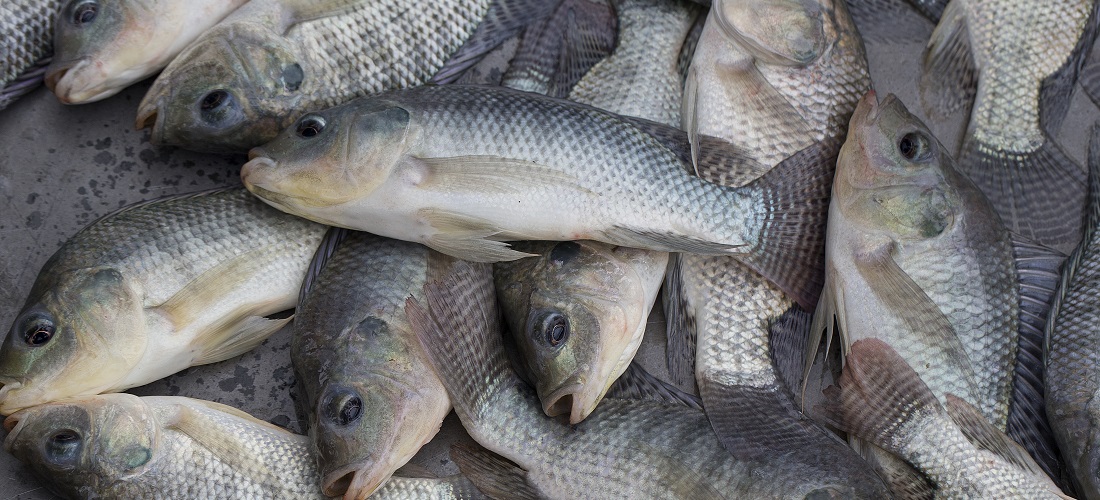
Tilapia imports from Vietnam puts sector at risk in Brazil
Feb, 05, 2024 Posted by Gabriel MalheirosWeek 202406
Recent imports of tilapia from Vietnam in December of last year have set off a series of concerns within Brazil’s fishing industry. One major issue is that the fish produced in Asia entered the Brazilian market at a significantly lower price than the cost of local production. This practice, known as dumping, involves trading products at prices well below their fair value, aiming to eliminate domestic competition and take control of the market.
“The price the products have arrived at our market is half of the production cost. Currently, we sell [a kilo of tilapia] between R$ 9.80 and R$ 10. To be able to compete internationally, we would have to reduce this price to R$ 5. That breaks the chain!” asserts Edmilson Zabott, President of the Technical Commission (CT) of Aquaculture at FAEP and President of the Rural Union of Palotina.
In the case of Vietnamese tilapia, the price set by the exporting country is $4.72/kg, 29.13% lower than the price set by the national industry for its exports. “How can a product arrive in Brazil costing 30% less than our production cost? Notice that Vietnam imports grains for feed production, so how does this product manage to reach our market at this price? Something is wrong,” analyzes Jairo Gund, Executive Director of the Brazilian Association of Fisheries Industries (Abipesca).
Facing this issue, Abipesca submitted a complaint to the Ministry of Development, Industry, Trade, and Services (MDIC) on January 17, questioning the import of 25 tonnes of frozen tilapia from Vietnam. In a letter sent to Minister Geraldo Alckmin, the entity requests the application of anti-dumping measures to protect the national industry from unfair competition with fish from Asia.
On the same date, FAEP sent a letter to the Minister of Fisheries and Aquaculture, André Alves de Paula, denouncing the import of Vietnamese fish, arguing that domestic production meets internal demand and that there is a surplus for export. In 2023, for example, the country exported over 2.1 thousand tonnes of fish to various countries, a 96% increase compared to 2022, generating dividends of $14.1 million.
Brazilian Fish Imports | Jan 2020 – Dec 2023 | TEU
Fonte: DataLiner (clique aqui para solicitar uma demonstração)
Ágide Meneguette, President of the FAEP/SENAR-PR System, compares the case of Vietnamese tilapia with what has been happening with the dairy industry. “Dairy imports are compressing internal product prices, making production unfeasible and, more importantly, removing many rural workers from the activity,” he argues.
On January 30, the Minister of Fisheries and Aquaculture, André de Paula, and the Minister of Agriculture and Livestock, Carlos Fávaro, met with representatives of the Brazilian fish sector to discuss the issue. On this occasion, Fávaro stated that the agricultural defense technical team at the Ministry of Agriculture would review the tilapia import protocol from Vietnam with the aim of reassessing the authorization. Import controls would also be strengthened to prevent such cases from recurring.
Apart from the commercial aspect, there is also concern about the quality and health of Vietnamese fish. “No one knows how tilapia is produced there. Whether it complies with environmental and/or health precepts correctly. Another thing is the quality. We have a huge concern with quality, with the taste. Something that this chain took years to perfect,” emphasizes Zabott.
According to the union leader, one major concern is that consumers won’t be able to differentiate Vietnamese tilapia from Brazilian tilapia, and in the face of an inferior quality product, they might give up consuming fish altogether. “Quality is the main characteristic of our product, so much so that we have opened markets in the United States, Japan, and European countries,” he argues.
One of the short-term consequences of this recent wave of purchases could be the disintegration of the productive chain, which has been growing exponentially, from fingerling production to inputs and equipment, passing through structures for slaughter. “This is a new chain, between 18 and 20 years, still in the structuring and growth phase. All investments, whether in industry or within the farm, have not been paid off yet. If we are invaded by foreign tilapia, there will be a lot of unemployment and indebtedness in rural areas,” projects Zabott.
If the forecasts come true, the volume of cultivated fish in Paraná will jump from 188 thousand tonnes in 2022 to 376 thousand tonnes by 2027. Currently, the state produces over one-third of the cultivated fish in the country. The Western region accounts for 70% of the state’s production, especially in the municipalities of Nova Aurora, Toledo, and Palotina – the three largest producers in the country.
Source: Notícias Agrícolas
Click here to read the original text: https://www.noticiasagricolas.com.br/noticias/agronegocio/369504-importacao-de-tilapia-do-vietna-coloca-setor-em-risco-no-brasil.html
-
Grains
Sep, 17, 2024
0
Brazil Secures New Market Openings in Angola, Australia, Canada, and Thailand
-
Meat
Apr, 19, 2023
0
Beef/Brazil: exports reach 43,245 thousand tons in April
-
Other Cargo
Sep, 02, 2022
0
Fertilizers: Brazilian imports total 3.49Mln tonnes in August
-
Other Cargo
Dec, 17, 2024
0
Furniture and Mattress Exports Record Positive Year-to-Date Performance

